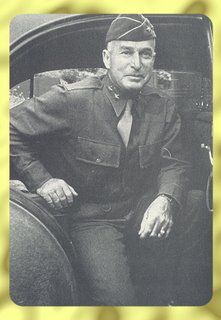88th.

This is coolbert:
In his book, "Understanding War", Trevor Dupuy expresses the greatest admiration for the U.S. Army 88th Infantry Division.
According to his calculations [and his calculations are in dispute by some], Dupuy rates the 88th Division as the # 1 U.S. infantry division in World War Two [WW2] [at least in the Italian campaign].
According to the calculation as done by Dupuy, the 88th Division was at least comparable to THE BEST German units in the same campaign. NO OTHER allied unit [British or American] that fought in Italy was of comparable value.
Keep in mind that the rule of thumb in WW2 was that it took 120 American or British soldiers to defeat 100 Germans. It is also of significance that it would take 200 Russians to defeat 100 Germans. These figures of course are for units at the brigade level or higher. A brigade usually consisting of about 5000 men.
From Dupuy:
"The results . . . of World War Two [WW2] data showed that the Germans were consistently better in that war than the Americans and the British, whether they were attacking or defending, whether they were winning or losing . . . it was not long before analysis of data from World War One [WW1] battles demonstrated that the phenomenon of German combat effectiveness superiority in ground combat in WW2 had been matched by a comparable superiority in that earlier war."
The Germans also had the utmost respect for the fighting capabilities of the 88th Division.
HOW is this known??
From captured German documents and interviews with high ranking German offices in the years subsequent to the end of the war.
From a captured German Tagebuch [day book, a journal], it is known that the Germans regarded the 88th Division as a "shock unit". The Germans made the assumption that where ever the 88th Division was found in the allied line was the point from which a main attack was going to be mounted. Accordingly, the German commanders would move their reserves opposite where the 88th was located, in anticipation of such a main attack!!
The significance of the Germans categorizing the 88th as a "shock unit" should carry a lot of weight.
A "shock unit", in German parlance, referred to a unit that:
* "Shock troops are infantry formations and their supporting units, intended to lead an attack."
* "have high enough morale to take heavy casualties during the opening engagements of an attack."
* "The primary goal . . . was to infiltrate the enemy's lines and break his cohesiveness as much as possible."
A number of leadership factors have been identified by Dupuy as being essential to the 88th being so successful. These would include:
* Aggressiveness.
* Attention to detail.
* Strict discipline.
* Inspirational talks and messages.
* Personal presence in the front lines. [I assume of the senior commanders in this case.]
* Essential tools necessary made available to the subordinates.
* Assignments are carried out properly.
* Strict adherence to military courtesy and proper uniform.
* Prompt relief of incapable subordinates.
* Establish rapport with subordinate commanders.
* Tactical skill.
* Grasping and communicating the "big picture".
Veterans of the 88th also perceived positive characteristics among the unit leaders the contributed to success. To include:
* Personal presence in the front lines. [commanders up front.]
* Discipline.
* Courage.
* Aggressiveness.
That the 88th Infantry Division was rated so well is somewhat surprising. There seems to be nothing from the get go that would indicate why this unit WAS SO GOOD.
According to Dupuy:
"Personnel policies were similar" [to other U.S. units].
"the 88th Division received NO particular advantages in the officers and enlisted men assigned to it."
" the training programs were identical." [to other U.S. units.]
In addition, the 88th Infantry Division was an ALL DRAFTEE unit.
"The 88th Division was one of fourteen new all-draftee divisions, activated in mid-1942."
There was something SPECIAL about this unit from the start. It took ONLY 16 months of training from inception to become ready for deployment overseas. Other draftee units took 23 months on average. The time for the 88th was much less than that.
Twined with the 85th Infantry Division, the "sister division" to the 88th, these two units participated in the liberation of Rome. This was Operation Diadem.
Dupuy credits superior leadership for the performance of the 88th Division. Major General John Sloan being the commander.

"By dedicated professionalism, inspiring leadership, and very hard work, General Sloan was able to raise his division . . . to a combat performance capability 43 % higher than that of the average of the other American divisions [in the Italian campaign]."
Training is pointed to as being the key to success for the 88th:
"During lulls in battle, and during rest periods, the division trained . . . Sloan carried out rear-area training programs and demanded standards of performance very similar to those characteristic of the Germans"
It also seems that General Sloan only was assigned command of the 88th Division by more or less chance and accident.
"Sloan . . . was 55 years old, and slightly over the arbitrary age limit that had been set for division commanders, . . . an exception was made. . . to allow Sloan to command. . . upon the recommendation of then-Brigadier General Mark W. Clark."
From the experience of the 88th Infantry Division, it should be abundantly clear that an entire division worth of draftees, properly motivated and trained, can be made into a credible fighting force in a relatively short time.
[more later on the calculations of Dupuy and naysayers to his theories and pronouncements!!]
coolbert.

0 Comments:
Post a Comment
Subscribe to Post Comments [Atom]
<< Home